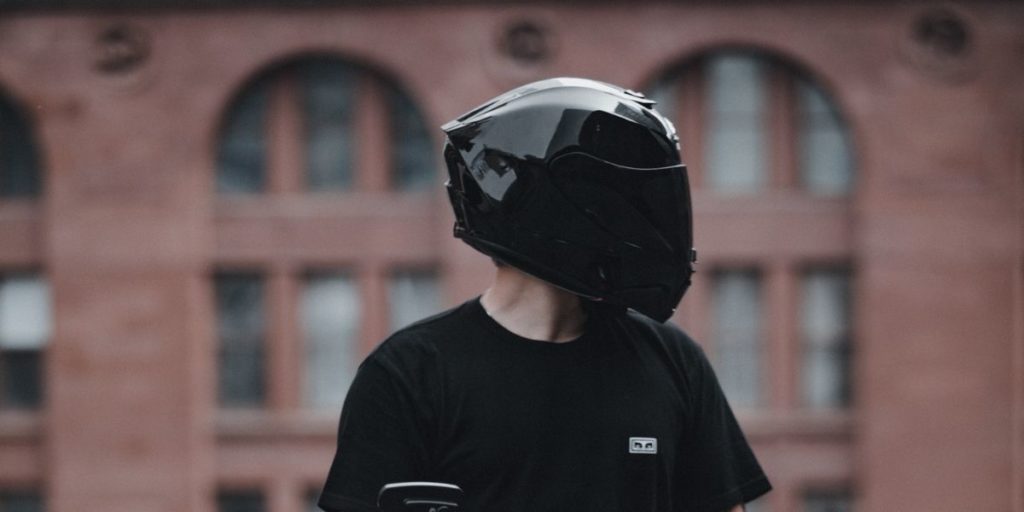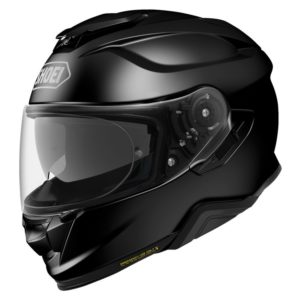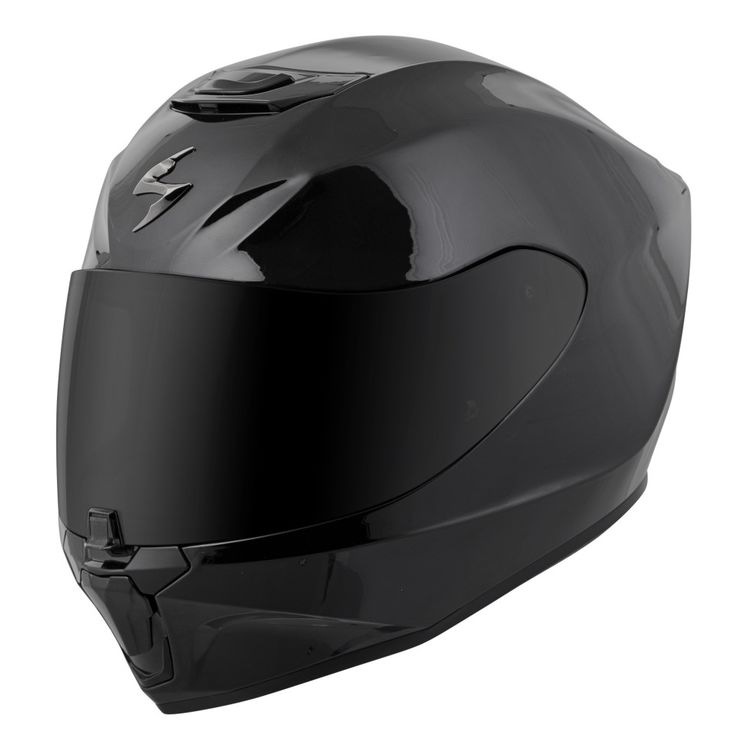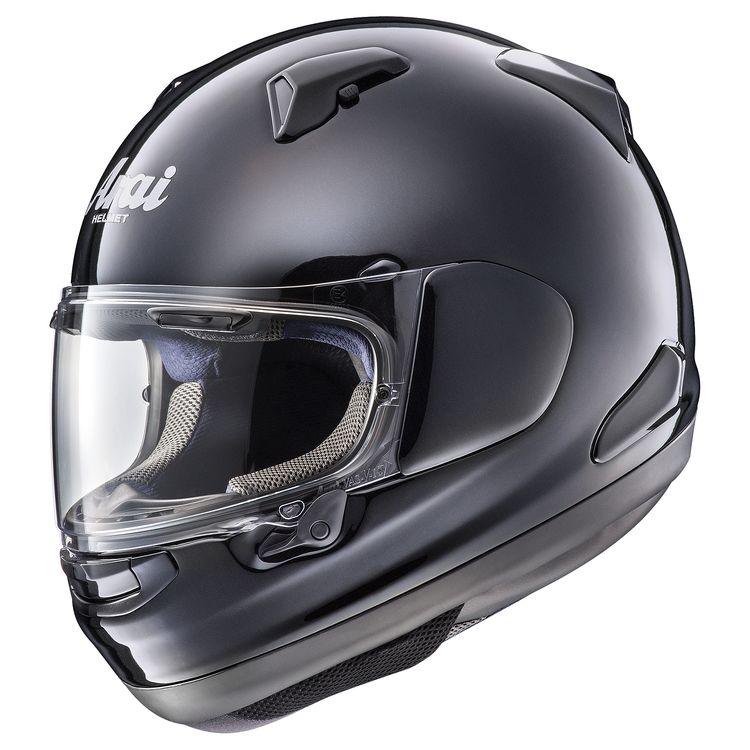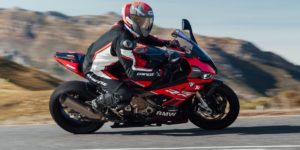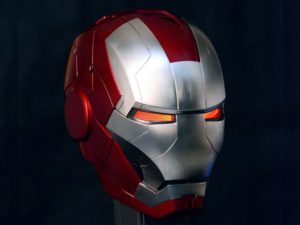Most of us struggle to find a helmet that fits properly. But what if you’re a big guy with a big head? Your trip may become much more difficult. Most motorcycle helmets are excellent, but just a few are made to fit over a large dome. Look no further for a motorbike helmet that will fit you perfectly.
Wear a motorcycle helmet to ensure that your head is protected in an accident. A decent helmet enhances the rider’s experience, making the ride more pleasurable and entertaining. As a result, here are our top selections for the finest motorcycle helmets for large heads.
5 Best Motorcycle Helmets for Big Heads Reviews
1. Scorpion EXO-R420 Helmet
Pros
- Composite shell made of polycarbonate.
- Wind and noise levels were reduced.
- Cheek pads that are contoured.
Cons
- The strap is unpleasant.
There’s a lot of pressure on the EXO-R420 to live up to the EXO-400 series helmets, known for their excellent value, fit, and artistry. The EXO-exterior R420 is composed of polycarbonate, which is anticipated at this price. In terms of safety, polycarbonate isn’t much of a liability, but it’s a lot heavier than composite shell or fiberglass materials.
Because of its natural flexibility, some individuals believe polycarbonate is superior at absorbing energy. The EXO-R420 is equipped with two intake vents, one located at the chin and one situated in the forehead, and an exhaust vent located at the back of the helmet that is permanently open. Many other colors and patterns are available to pick from for the reasons previously stated.
The Scorpion EXO-R420 helmet’s inside is a high-quality, machine-washable fabric with moisture-wicking and antibacterial qualities. Without requiring any extra equipment, you may easily remove the 3D interior cushioning with your hand. The connecting points are situated on the margins of the lining to prevent pressure from being applied to the top of its head.
2. Icon Airflite Helmet
Pros
- The design is sleek and aerodynamic.
- A visor of exceptional quality.
- Liner pads that can be washed.
Cons
- It’s pretty hefty.
The Icon Airflight helmet is an excellent option for searching for a low-cost Full Face sport touring helmet with many adaptabilities. Additionally, this helmet is DOT-certified, allowing it to be used in even more situations. However, according to the SHARP helmet safety grading method, this helmet only received three stars for safety, performing poorly in frontal and side collisions.
An injection-molded polycarbonate casing protects the Airflite. Compared to fiberglass or carbon, polycarbonate is a less expensive material, but it requires more polycarbonate to provide the same level of protection. The helmet also includes dual-density EPS, which helps with impact resistance. For a cheap helmet, the three shell sizes offered by this one are rather impressive.
The advantage is that you’ll receive a helmet that fits you better since you’ll be receiving a different-sized helmet instead of bigger cheek pads that add weight to make the helmet seem oversized. This helmet should perform well in terms of ventilation as well. An impressive amount of ventilation is provided by an innovative option made by Icon to have the visor extend to your chin.
3. Shoei GT-Air II Helmet
Pros
- It is quite pleasant to wear.
- The Interior is simple to keep clean.
- Stylish and long-lasting fabric mix.
Cons
- The strap is inconvenient.
Shoei’s GT-Air II is a superior helmet for those with bigger heads that are a severe equipment component. This helmet is ideal for those with a round head shape. With this helmet, Shoei aims to bring together the greatest features of its RF-1100 and RF-SR models from prior generations in a single package. Like the GT Air, Premium sports helmets are an excellent option for most riders.
Polycarbonate was used in its construction to make the outer shell stronger and lighter than alternative materials, such as fiberglass. That means you’ll have robust protection without worrying about gaining extra weight. The GT-Air has a broader field of vision, more room for eyeglass frames, and a revised chin curtain with a nose vent to help decrease fogging.
When it comes to staying cool on lengthy rides, this stylish helmet was created with maximum ventilation. The GT-Air II’s shield is treated with a unique anti-fog coating that can be removed for easy cleaning. It’s the smallest and lightest full-face helmet Shoei has ever made. The ventilation system and the contour of the center cushion and cheek pads provide a unique fit.
4. Arai Quantum-X Helmet
Pros
- A visor that performs flawlessly.
- Fashionable and elegant.
- The impact is absorbed correctly.
Cons
- It’s pretty hefty.
The Quantum X has a lot to prove, considering the reputation it has earned as the successor to the long-running classic RX-Q. Fortunately, Arai isn’t one to cut corners, and they’ve improved on a helmet that’s been at the top of the heap for years. Installing a Corsair X headliner will make the Quantum X marginally longer for those with an intermediate oval head shape.
The Quantum X helmet recalls the universally acclaimed fit of the RX-Q, which boasts a balanced form with a bit of additional space on the sides, giving it a fantastic fit for individuals with a little more rounded head shape. Typically, the mounting point of the shield must be kept at a reasonably high level since a lower shield hinge will prevent the shield from opening or closing.
Multiple Arai-developed materials and processes combine to produce the innovative Peripherally Fitted – Super Complex Laminated Construction shell design, offering high performance at an affordable price. The entirely detachable inside liner system is manufactured from Eco-Pure material to maintain neutral pH levels near the skin surface and antibacterial consumption.
5. AGV K3 SV Helmet
Pros
- Excellent noise-canceling.
- The liner is removable and washable.
- The ventilation system is excellent.
Cons
- Too tight cheek pads.
The original K3 was a decent entry-level sports-touring helmet, but AGV took the K3 SV and worked some technological magic to add a sun visor. We begin by looking at the K3 SV’s body. The outside shell of this entry-level helmet is made of polycarbonate, which is not unexpected given its price. Although it is a good deal, it is not the finest material available.
If we proceed inside the helmet at this point, we will find a lining that is both comfortable and effective. It’s a three-dimensional inner liner composed of Dry-Comfort fabric. Additionally, it is detachable and machine washable. To be fair to this liner, you can see that the underside of this liner looks a bit shabby. Nonetheless, this is a low-cost liner, so it’s alright with me.
There is a single component that includes the cheek pads & neck roll. The headliner is linked with two snaps at the front, which may be bothersome to specific persons. The K3 isn’t a quiet helmet when it comes to noise isolation. The inside is spotless, and we’ve included speaker holes so you can connect a communications system if you so choose.
Buying Guide
Size: The size of the helmet is essential when selecting a helmet for a large head. There are many different sizes for almost all of the helmets. Some helmets are available in various sizes, including small, medium, and extra-large. Some firms manufacture helmets for people with large heads and provide extra-large-size helmets to customers who need them.
Head Shape: Motorbike helmets are available in various interior configurations, one of the most important factors to consider when selecting a motorcycle helmet. When seen from above, most motorcycle helmets may have a ‘neutral,’ ‘oval,’ or ’round’ shaped internal profile.
Helmet Weight: Wearing a helmet of the proper size and shape is crucial. For the lid’s weight to be appropriately distributed across your head and shoulders, A light helmet may seem heavier and cause pressure on your neck if the fit is improper. Before buying a helmet for yourself or a loved one, consider this.
Durability: Always take into account the material that was employed in the production of the helmet. Both the outside and inside material must be considered. It should be constructed of a long-lasting substance, and the inside material should be resistant to cleaning. The exterior material should be solid and sturdy enough to provide you with a sense of security.
Comfort: A well-fitting helmet with an inner liner that comfortably keeps the helmet on your head will make you feel more comfortable while wearing it. Aside from that, the inner lining should be capable of significantly reducing noise from the outside environment and the wind. If you have a choking danger, you should avoid using a neck strap that is difficult to clasp and unfasten.
Defense Shell: In an accident, the Defense shell must be designed to prevent penetration through the helmet. In the event that the shell is crushed during a collision, major head injuries may result. Outer shells made of polycarbonate alloys are a good choice. This material is used to make more protective helmets.
Inner Foam: EPS is included in the majority of the top motorcycle helmets (Extended Polystyrene Foam). The foam’s density is intended to buffer the impact of a collision. The higher the EPS foam’s thickness, the better the protection. Multi-layered EPS foam is now available in the top motorcycle helmets. A helmet with this EPS density is preferable.
Face Shield System: The face shield is a critical helmet component. For the face shield to be effective, it must protect the wearer from airborne particles such as dust and debris. It should also have the highest optical clarity possible, without distortion or glare. It is common for the finest motorcycle helmets to have twin-face shields. A helmet with two face shields is required.
Ventilation: The helmet you choose should feature a sophisticated venting system that allows you to breathe more easily. When designing the vent system, ensure that it takes in enough air to maintain a steady temperature within the helmet and that the rider does not feel suffocated. The best motorcycle helmets include inlet and exit vent openings that are correctly positioned.
FAQs
When should your helmet be replaced?
A helmet should be replaced for a variety of reasons. The first is, as previously noted, a helmet drop. The shell is capable of absorbing an impact, but only once. Your helmet will not be able to withstand the impact if you drop it in the same location a second time. The expiry date is another incentive to replace your helmet. A helmet is only good for a few years. After that, you’ll need to replace it since the inner shell will dry up and lose its absorbency.
How do you know your motorcycle helmet head shape?
It’s critical to understand how to choose a motorbike helmet that is comfortable and safe for you. The most accurate approach to accomplish this is to measure your head. You’ll want to measure your head’s circumference at its broadest point. You should also measure your head height. A device that sits on top of your head and measures your height is required. Going up a size may be necessary if your head is massive.
What are the Benefits of Using a Perfect Fit Bike Helmet?
It’s not difficult to obtain a nice helmet in today’s world, but finding the proper fit is frequently more difficult. When buying a helmet, it may be difficult for riders to locate one tailored to their specific head size since most are created to fit into a standard mold and then placed on the same shelf at the retailer. Several helmet characteristics have been compiled to assist riders in finding the correct fit for their needs. Please see the table below for more information.
What is DOT Certification, and why is it important?
In the United Kingdom, the National Highway Traffic Safety Administration (NHTSA) has established a standard mark for motorcycle helmets that have satisfied specific safety requirements. The authority does not conduct the test; instead, each helmet manufacturer conducts its crash test and provides the results to the authority, certifying the helmet if it meets the requirements.
Conclusion
If you’re presently looking for a helmet but need a larger size, it is quite feasible to discover a helmet that is both comfortable and well-suited to your requirements. Keeping the characteristics mentioned above in mind will allow you to ensure that you not only purchase a helmet with a comfortable fit but also one that is capable of protecting you while you’re out shopping.


